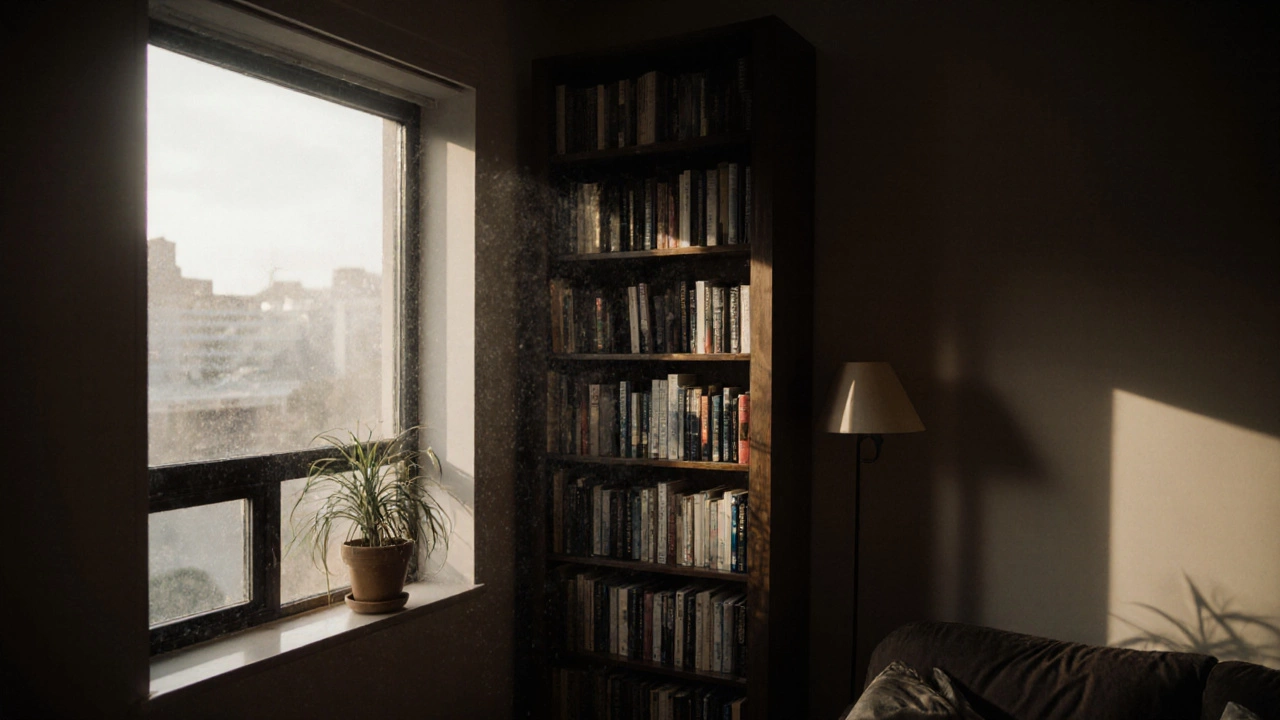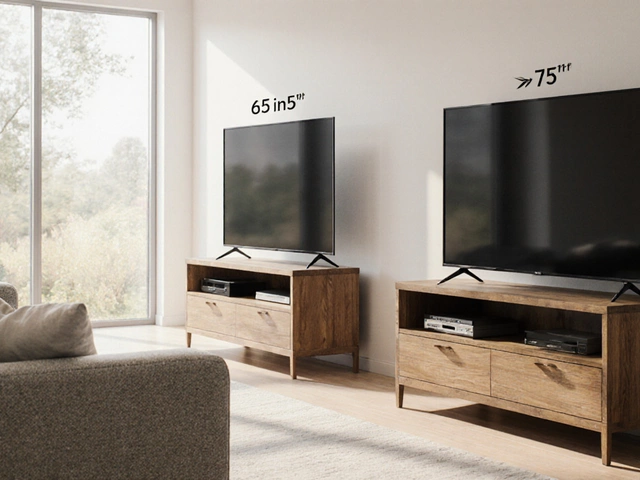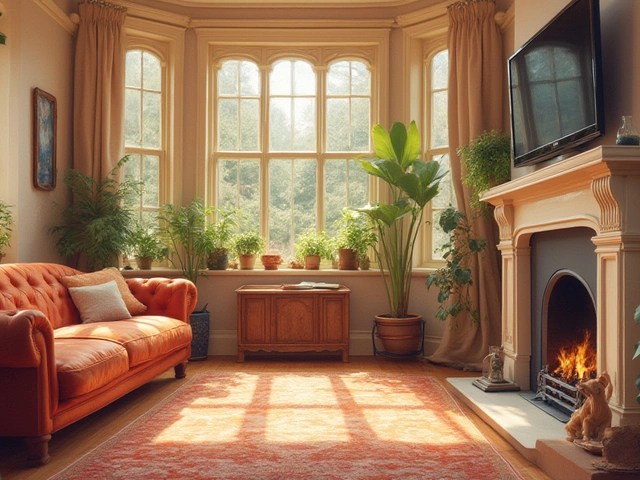Putting a bookcase in front of a window seems like a smart way to save space-especially in small apartments or cozy rooms. But is it really a good idea? The answer isn’t simple. It depends on your home’s layout, how much light you get, what you’re storing, and even the season. Many people do it without thinking twice, only to realize months later that their plants are dying, their reading nook is too dark, or their windows are covered in dust because they can’t reach them.
Why People Put Bookcases in Front of Windows
It’s not just about saving space. Bookcases are tall, narrow, and often match the height of windows. Placing one right in front feels like a natural fit. You get storage where you need it, and the window adds a bit of visual balance. In urban homes where every square foot counts, this setup is common. In Auckland, where many older houses have narrow rooms and limited closet space, it’s a practical workaround.
But here’s the catch: windows aren’t just openings-they’re sources of light, ventilation, and connection to the outside world. Blocking them changes how your room feels. You might not notice right away, but over time, the room gets heavier, duller, and less inviting.
How Much Light Are You Losing?
A standard window lets in about 70-80% of available daylight. A solid wood bookcase with shelves full of books can block 50-90% of that, depending on how deep the shelves are and how tightly packed the books are. If your window faces north (in the Southern Hemisphere), you’re already getting softer, indirect light. Add a bookcase in front, and you’re cutting your natural illumination nearly in half.
Think about your daily routine. Do you read in the morning? Work at a desk near the window? Have indoor plants that need sunlight? If you answered yes to any of these, putting a bookcase there will make those activities harder. A study from the University of Auckland’s Environmental Design Lab found that rooms with blocked windows had 30% higher reported cases of eye strain and lower mood scores among residents during winter months.
What About Airflow and Ventilation?
Windows aren’t just for light. They’re your home’s natural air exchange system. In Auckland’s damp climate, poor airflow leads to condensation, mold, and musty smells. A bookcase pressed right against a window traps moisture between the glass and the back of the unit. Over time, this can rot the wood, warp the shelves, or even damage the wall behind it.
Even if you don’t open the window often, air still moves. Cold air sinks, warm air rises. A bookcase blocking the lower part of the window disrupts this flow. In winter, it can make the room feel colder. In summer, it keeps heat trapped near the glass, making your home harder to cool.
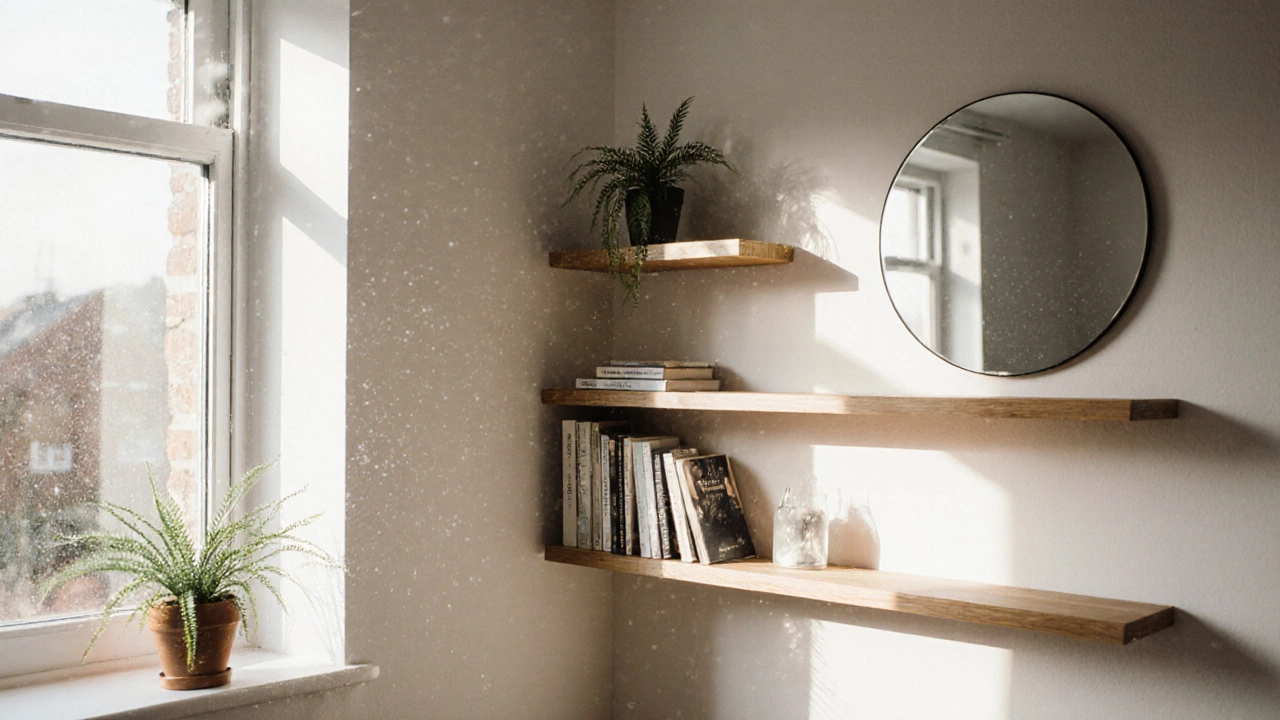
Access and Maintenance Are Often Ignored
How often do you clean your windows? If you’ve got a bookcase in front, you’re probably not doing it as often as you should. Dust builds up on the glass, on the top of the bookcase, and even behind the unit. Cleaning becomes a chore-maybe even impossible without moving heavy furniture.
And what if the window leaks? Or the seal breaks? If you need to replace the glass or fix the frame, you’ll have to empty the entire bookcase. That’s hours of work, and you’ll likely end up damaging books or decor in the process. Most people don’t think about this until something goes wrong.
When It Actually Works
That doesn’t mean you should never do it. There are situations where a bookcase in front of a window makes sense.
- Small windows with low light: If your window is tiny, or faces a brick wall or alley, blocking it won’t make much difference. In those cases, the bookcase adds value without sacrificing much.
- Top-mounted shelves only: Instead of a full-height bookcase, try a narrow, floating shelf that sits just below the window sill. It keeps the lower part open for light and airflow.
- Sliding or open-back bookcases: Some modern bookcases have open backs or are mounted on rails so they can be pulled forward. These are rare, but they exist. You can slide it out to clean the window, then push it back.
- Non-functional windows: If the window is sealed shut (like in some older homes), and you’re using it purely for decoration, then blocking it is less of an issue.
Alternatives That Keep Light and Storage
You don’t have to choose between storage and sunlight. Here are better options:
- Corner bookshelves: Use the space beside the window instead of in front of it. A corner unit fits neatly and doesn’t interfere with light flow.
- Wall-mounted floating shelves: Install narrow shelves along the wall above or beside the window. You get display space without blocking anything.
- Low-profile bookcases: Choose a unit that’s only 3-4 feet tall. It holds books but leaves the top half of the window clear. This works especially well with bay windows.
- Window seat with storage: Build or buy a bench that fits under the window. The seat lifts up for hidden storage, and the window stays fully open.
One reader in Ponsonby, New Zealand, replaced her bulky floor-to-ceiling bookcase with a series of three narrow floating shelves beside her window. She kept all her books, added two potted ferns on the sill, and says her room feels 50% brighter-even in May.
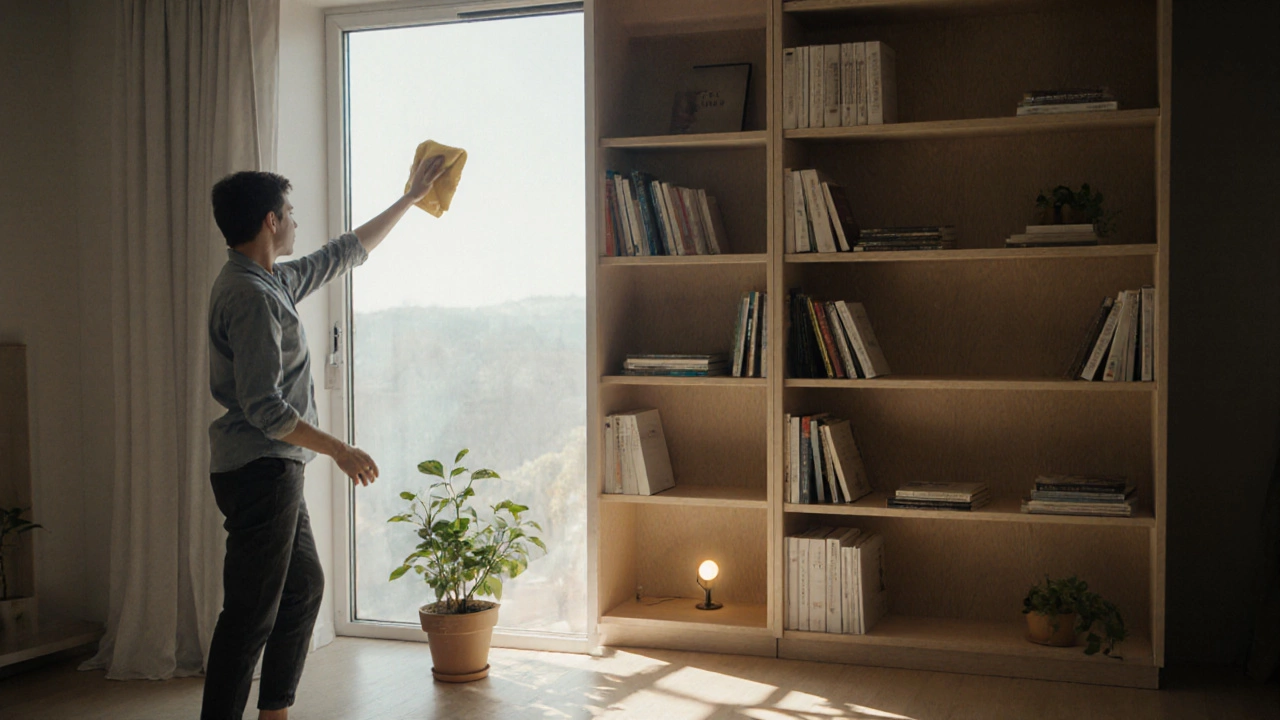
Signs You’ve Made a Mistake
Ask yourself these questions:
- Do you have to turn on a lamp to read near the window, even during the day?
- Are your plants turning yellow or dropping leaves?
- Has condensation built up on the inside of the glass?
- Do you avoid cleaning that window because it’s too hard to reach?
- Does the room feel stuffy or darker than other rooms?
If you answered yes to two or more, it’s time to rethink your setup. You don’t need to get rid of the bookcase-just move it. Even shifting it 12 inches away from the glass can make a big difference.
Final Rule of Thumb
Here’s a simple way to decide: If you can’t see the sky from your favorite chair, the bookcase is in the wrong spot.
Natural light is one of the most underrated elements in home design. It affects your sleep, your mood, your energy levels, and even how clean your space feels. A bookcase is just furniture. A window is part of your home’s health.
Before you push that bookcase against the glass, ask: What am I gaining, and what am I losing? If the answer is more storage but less light, less air, and more work later, there’s probably a better way.
What If You Already Did It?
No need to panic. You don’t have to tear everything apart.
- Clear the top shelf. Move your books to the lower shelves and leave the top 6-12 inches open. This lets light filter through.
- Switch to lighter-colored books or use bookends to create gaps. Even small spaces between books let light pass.
- Place a small mirror on the wall behind the bookcase. It reflects what little light gets through.
- Use LED grow lights for plants that are struggling.
- Wipe down the window monthly-even if you can’t reach the whole thing. A damp cloth on the lower part helps prevent mold.
These small changes can make the space feel more open without moving the whole unit.
